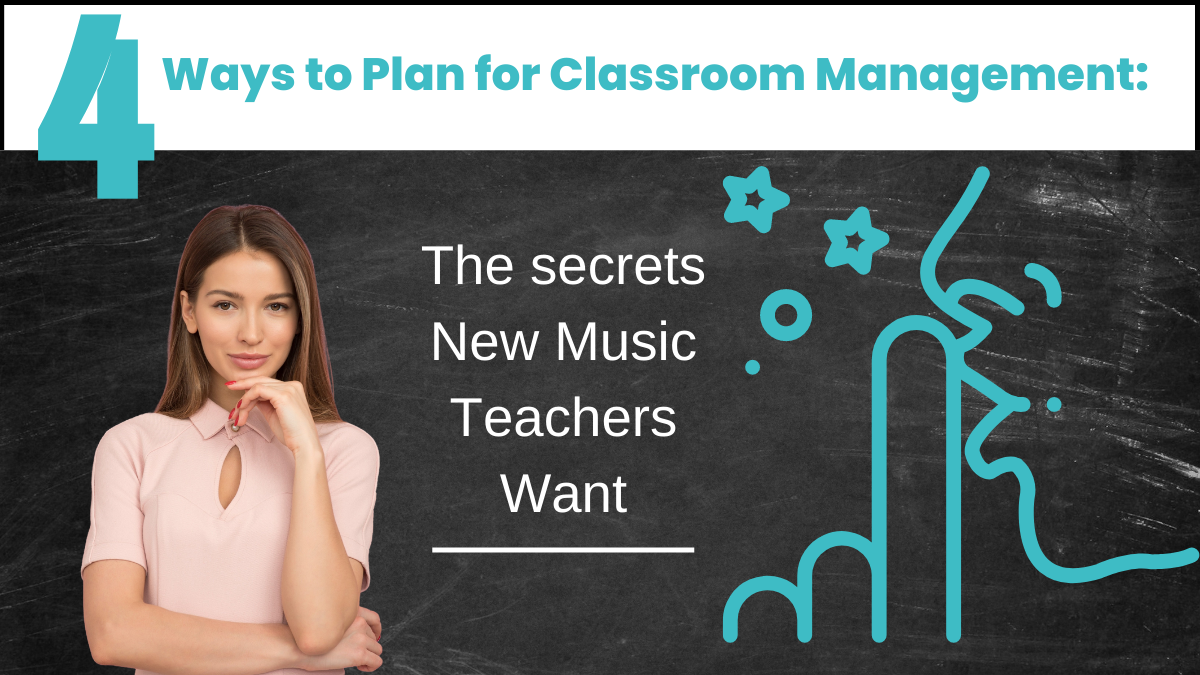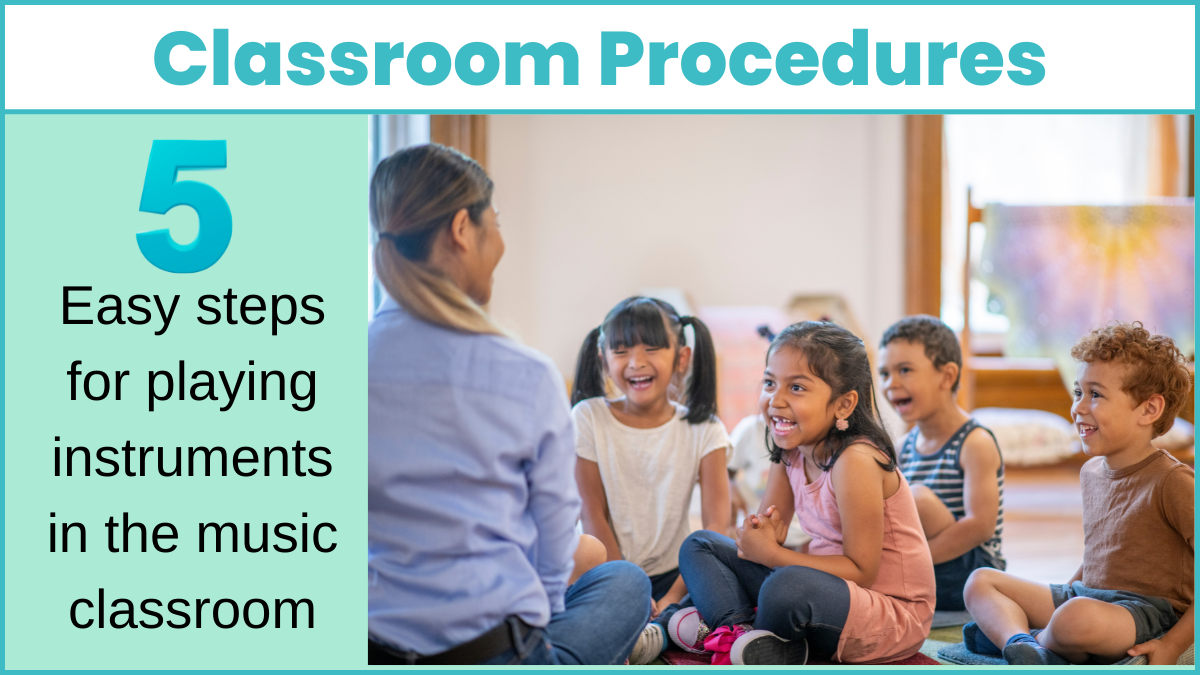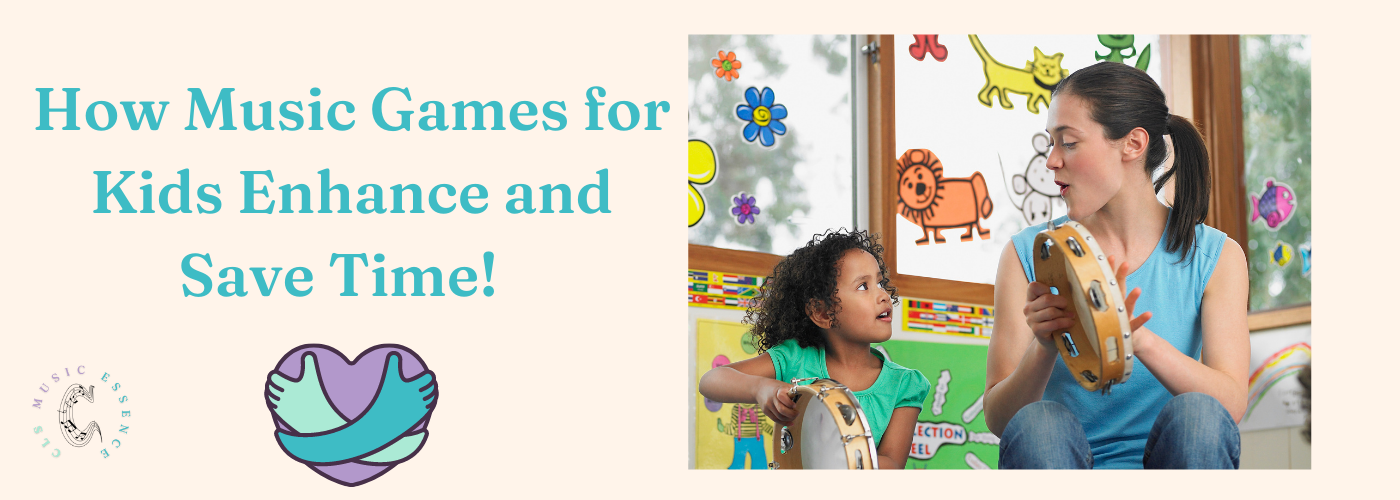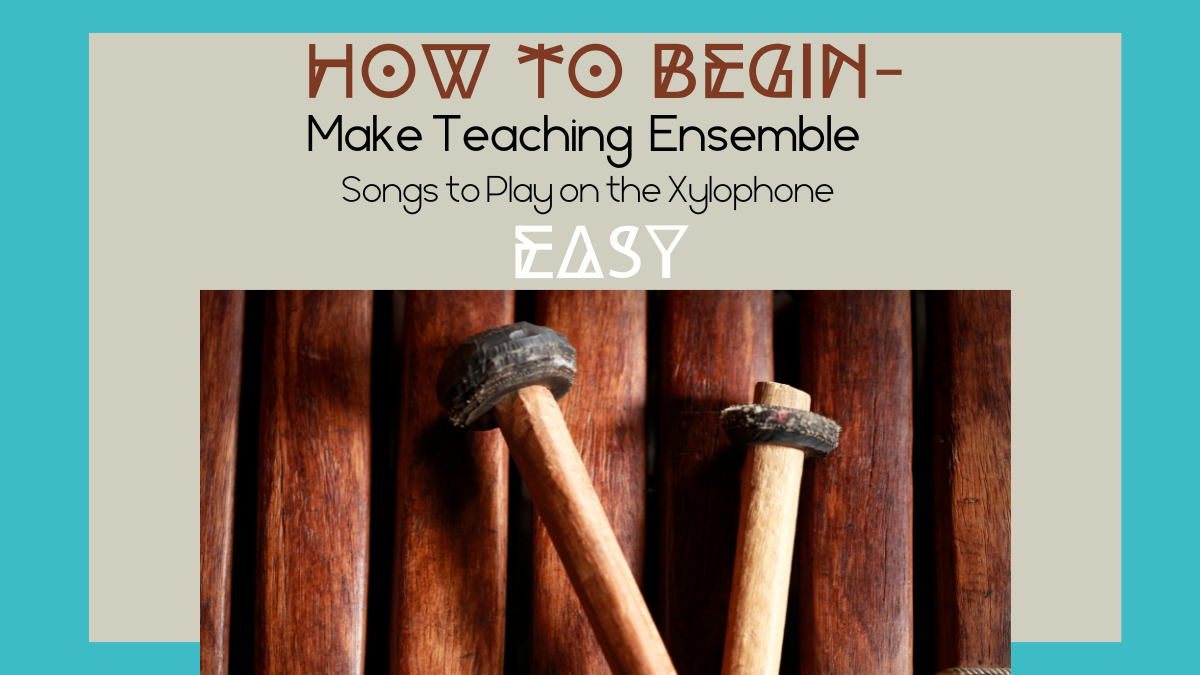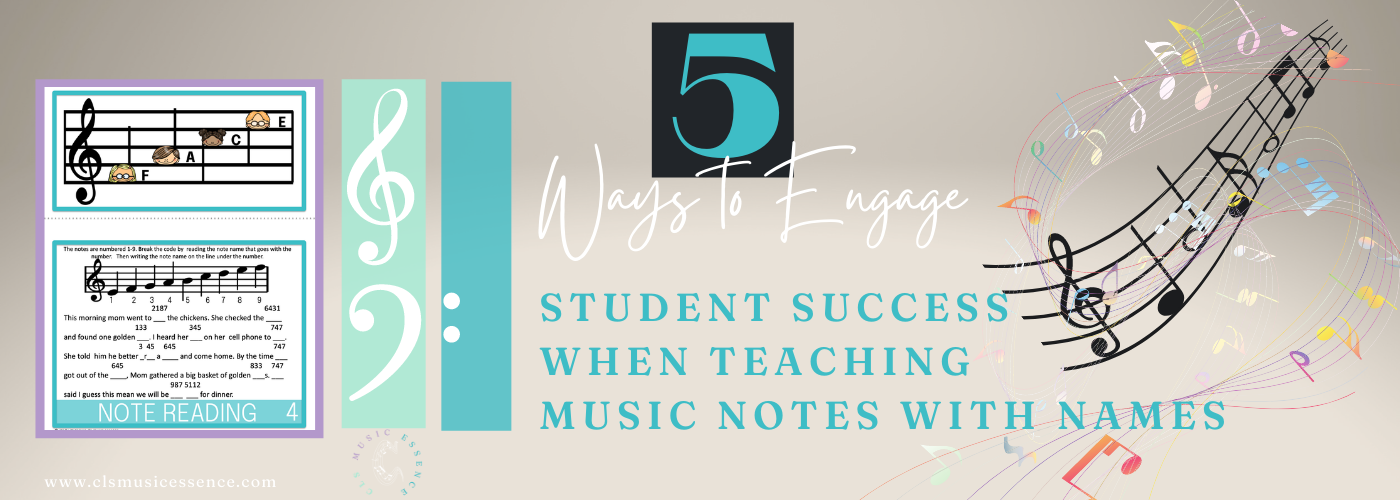How Music in Kindergarten Vocal Levels lesson will Engage Students all Year
Music in kindergarten is a blast when you bring the villain, hero and heroin to class. If you are looking for kindergarten lesson plans about voice levels and expression in music to use all year in your music classroom, here are several fantastic ideas and also a genius way to turn it into a melodrama performance parents will eat up!
You can teach students about expression in music with voice levels posters and cards and have a tool to use all year. Along with the standard
“Whisper, Talk, Sing, Shout”
Add some easy opposite expressions….
“Low – High,” “Fast – Slow” or “Loud – Soft”
Just having these flashcards or posters will give you the tools to encourage participation during music listening activities. Students can point to a poster or hold up a flash card to show if they think the music is slow or fast.
Kindergarten Free Worksheets
Grab these kindergarten free worksheets. Student size voice levels flashcards makes it easy to start teaching your students about whisper, talk, sign, shout. Plus music opposite flashcards for high – low, fast – slow, loud – soft. Also includes fun pictures to teach ta and ti-ti with worksheets to set up centers in kindergarten. Grab it below and I’ll stop by from time to time with new inspiration, and tried and true tips and tricks! Let’s get started!
Music Lesson Plans Kindergarten Voice Levels and Opposites
This makes listening to classical songs like the Rimsky Korsakov Flight of the Bumble Bee or Camille Saint-Saëns Carnivale of the Animals – Swans easy to participate and compare music. All the kindergarteners have to do is hold up a card or point to which poster they hear.
Music Opposites: fast – slow, high – low, loud – soft
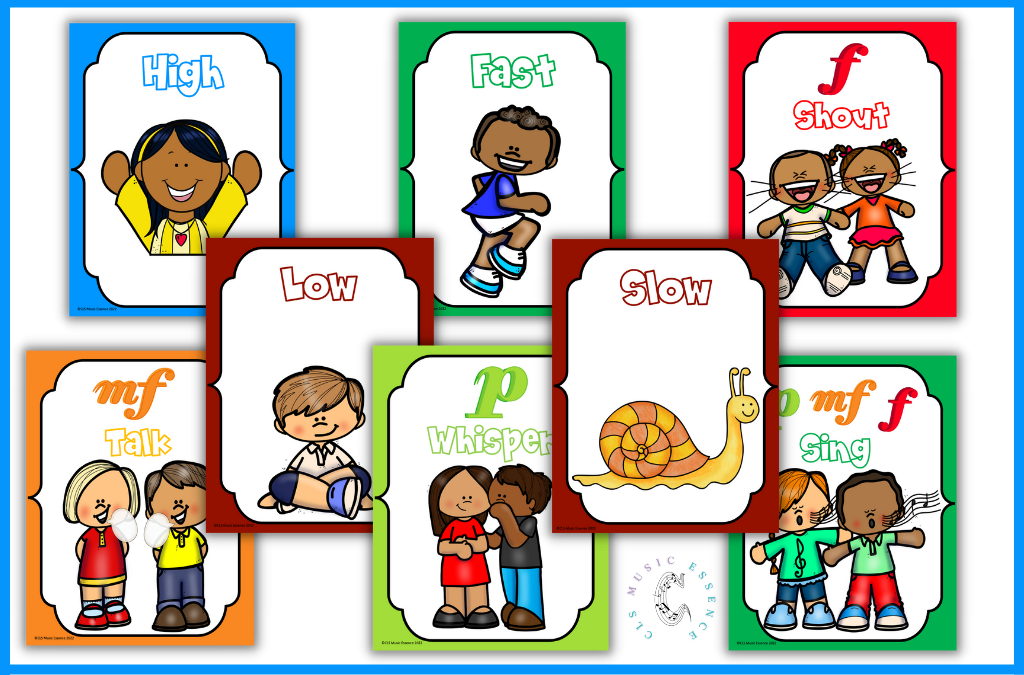

Or use opposites to create music. Students can demonstrate movement or play on an instrument fast – slow, high – low or loud – soft. Keep some crowd control by having them use independent limbs. Try just arms, only fingers, tip top feet, pat thighs. You get the idea. Use fun instruments: egg shakers, boomwhackers, rhythm sticks, xylophone or drums.
If you’re up for some excitement, add some props to your movement. Scarfs are great for independent choices and a large stretchy band or a parachute will get the whole class to demonstrate together.
Melodic Contour
Having your students demonstrate high and low pitches with movement or instruments is the beginning steps to understand the concept of melodic contour. They are also learning to follow directions and eventually a director’s musical cues. In kindergarten they will just think they are having fun with their hands high in the air or low to the ground.
Student Leaders
Students can also take turns being the director of the group by holding up the 6 flashcards. It’s a great opportunity to teach leadership and works as a time filler when you need to have an activity to fill the last couple of minutes in class.
What if they get to choose 2 cards? What does fast and quiet look like or sound like? Pair this up with your favorite name song and students can demonstrate their name matching the flashcard.
The same idea can happen with voice level flashcards. Introduce the levels, whisper, talk, sing, shout in an echo form of my turn your turn. Demonstrate the word and have student’s echo the word back demonstrating the voice level.
Voice Levels Rap


Create a rap using the 4 voice level words as the chorus and then write 4 verses using each voice level word in a question that the students can respond to:
Sing, Sing where do people like to sing?
Then the chorus can be the A section and the question/answer verse the B section. You can develop any form you want AAB or ABA (rondo form). Then when the principal comes to your room to evaluate you can write up your lesson plan stating specific measurable learning goals.
Students will:
- demonstrate 4 voice levels, whisper, talk, sing, shout, using question answer in a rondo form.
- create melodic contour demonstrating high and low notes while following visual cues from the director.
- demonstrate an understanding of opposite dynamics, loud and soft, and tempos, fast and slow, while moving or listening to music.
- perform a combination of 2 music concepts (pitch, dynamics and tempo) from visual cues.
Kindergarten Musical – Melodrama!


Once voice levels and opposite concepts are taught and practiced they can be brought together in a performance. Melodrama is based on exaggeration and is a perfect platform to use for displaying what your kindergarteners have learned.
I wrote a short 6-minute melodrama about a music teacher in Leadville, Colorado, a 1880 silver mining city located high in the Rocky Mountains. Students can take turns or speak as a group to demonstrate voice levels and music expressions.
Parents just love the audience responses of cheer, boo, hiss and more. I always like to add the popcorn sign. Audience members get to throw popcorn at the villain at the end of the show. I just use pieces of crumpled paper for popcorn. They can grab it on the way into the performance and it is easy to pick up and put back in a bucket at the end.
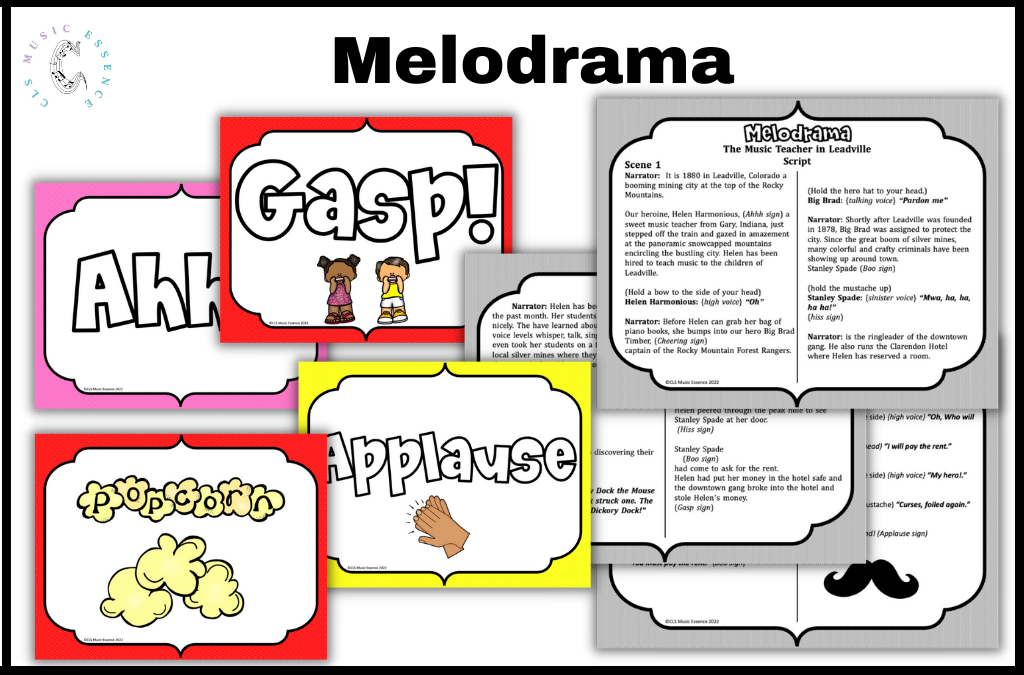

Also add some photo booth props, hat, bow and mustache for fun character details. Grab some ragtime piano music and you have yourself a little mini-musical kindergarteners can perform for other music classes too and make it a yearly tradition.
Voice Levels Music in Kindergarten Lesson Plan
If you love the idea, but don’t have the time to write a melodrama, you can see the product I created by clicking here. I included digital google slides with pre recorded audio ragtime piano accompaniment, narrator lines, and sound effects. There is space for character responses making it a track to perform with.



